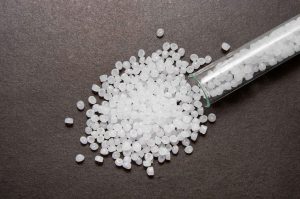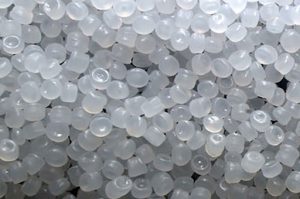PE With best price

What is PE ?
Polyethylene is one of the many types of thermoplastic polymers, which means that it becomes a liquid state upon reaching its melting point and solidification.
The catalyst and polymerization method of this material can control various properties such as density,

melt flow index (MFI), crystallinity, branching and lattice degree, molecular weight and molecular weight distribution.
Low molecular weight polymers are used as lubricants.
Medium molecular weight polymers are miscible waxes with paraffin, and ultimately, polymers
with molecular weights higher than 1 have the highest consumption in the plastics industry.
Polyethylene has a very simple structure, making it simpler than all commercial polymers.
A polyethylene molecule is a long chain of carbon atoms attached to each carbon atom by two hydrogen atoms.
What are the types of PE?
Ethylene is classified according to its density.
It depends on the density value of the polymer chain size and the type and number of branches in the chain.
What is HDPE or Heavy Duty Polyethylene?
This polyethylene has branched polymer chains.
Therefore, the high molecular weight intermolecular force and its tensile strength are higher than that of other PEs. The reaction conditions and the type of catalyst used are effective in the production of high-density polyethylene HDPE. Ziggler-Nata catalysts are usually used for the production of unsaturated polyethylene.

What is LDPE or Lightweight Polyethylene?
This polyethylene has a branched chain.
Therefore, LDPE chains cannot bond well together and have poor intermolecular strength and less tensile strength. This type of polyethylene is usually produced by radical polymerization.
This polymer has the flexibility and ability to be degraded by microorganisms.
What is LLDPE or low density linear polyethylene?
Polyethylene is a linear polymer with a number of short branches and is usually formed by copolymerization of ethylene with long chains.
MDPE is a medium-grade polyethylene and is commonly used in the manufacture of plastic pipes and plumbing fittings.
What is the application of PE?
Polyethylene is widely used in the production of all kinds of plastic used in the kitchen and food industries.
LDPE is used in the manufacture of lightweight plastic containers as well as plastic bags.
LDPE is used in the manufacture of milk containers and liquids and all kinds of plastic kitchen utensils.
MDPEs are commonly used in the manufacture of plastic pipes and plumbing fittings.
LLDPE is used in the manufacture of various types of flexible plastic devices such as bending pipes due to its high flexibility.
Recently, there has been a great deal of research in the production of long chain polyethylene with short branches. These polyethylenes are essentially HDPEs with a number of side branches.
These polyethylenes combine HDPE strength and LDPE flexibility.
Sometimes, instead of hydrogen atoms in the molecule (polyethylene), a long chain of ethylene attaches to carbon atoms, which is called branched or light polyethylene (LDPE), because its density has been reduced due to higher volume occupancy.
In this type of polyethylene, ethylene molecules are randomly bonded to each other, forming a very irregular shape. Its density is between 1/4 and 1/8. It is produced under high pressure and temperature, often using free radical polymerization .
However, Ziegler-Natta polymerization can also be used for its preparation.
When there is no branch in the molecule, it is called linear polyethylene .
Linear polyethylene is harder than branched polyethylene but polyethylene is made easier and cheaper.
The shape and shape of this polymer are very crystalline.
Linear polyethylene is a normal product of 2-5 molecular weight polymerized under relatively low pressures and temperatures.
There is also polyethylene that has a density between the density of the two polymers, ranging from 0.5 to 2.5%, which is called semi-heavy or medium polyethylene.
Molecular weight polyethylene of between 1 and 2 million is called high molecular weight polyethylene or UHMWPE and produced by metallocene catalyst polymerization.
The material has a more difficult processability but its properties are excellent.
When the polymer becomes fully crosslinked by radiation or the use of chemical additives, said polyethylene will no longer be soft heat.
This material will bake during or after molding a real hard heat with tensile strength, electrical properties and good impact strength over a wide range of temperatures.
To purchase, send your purchase request to the company email.

